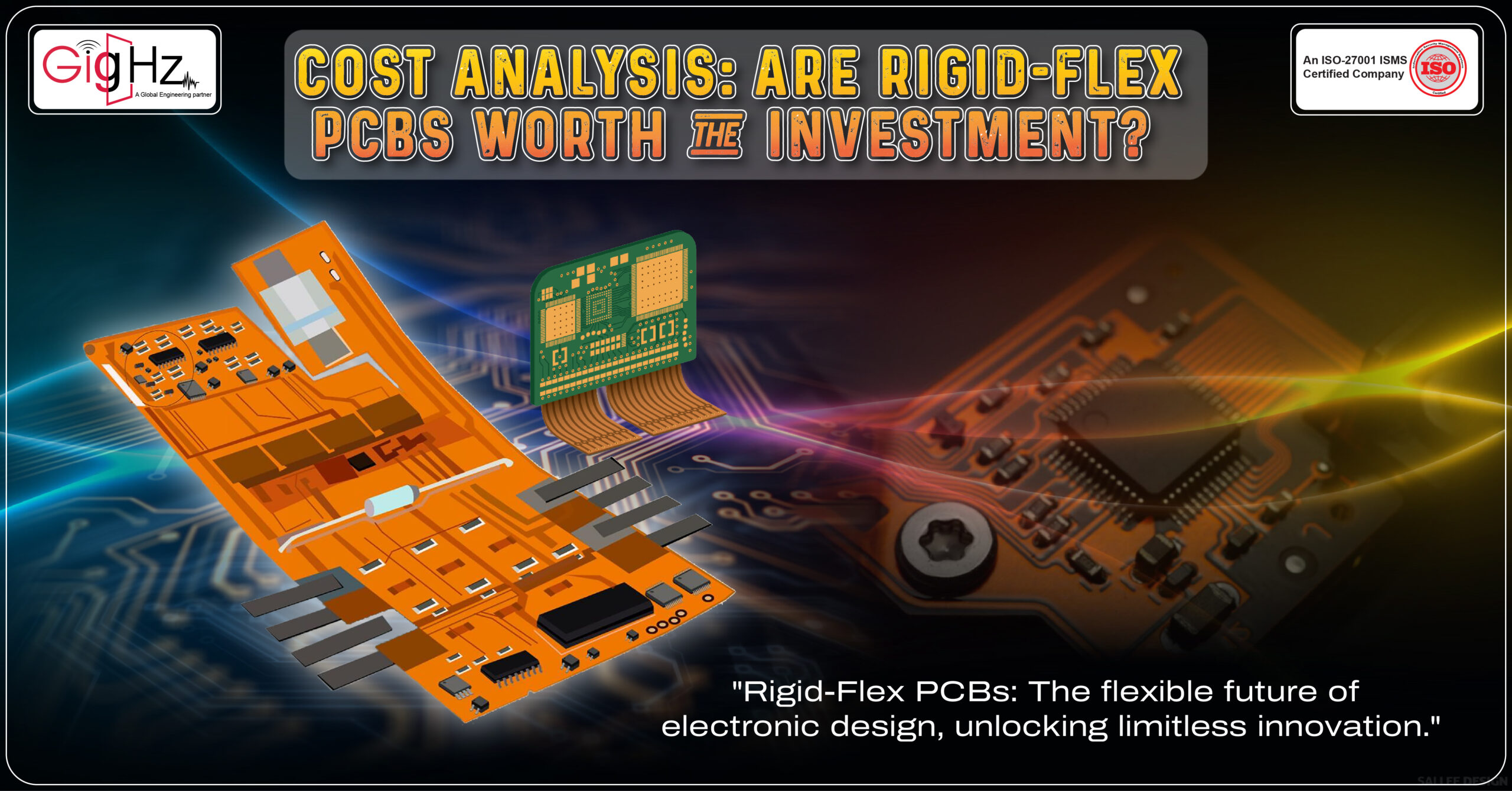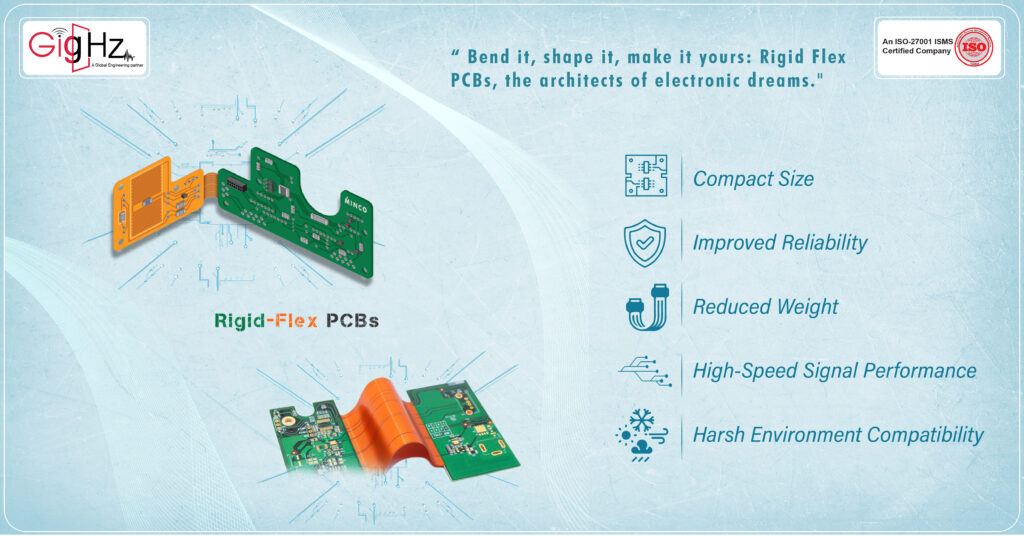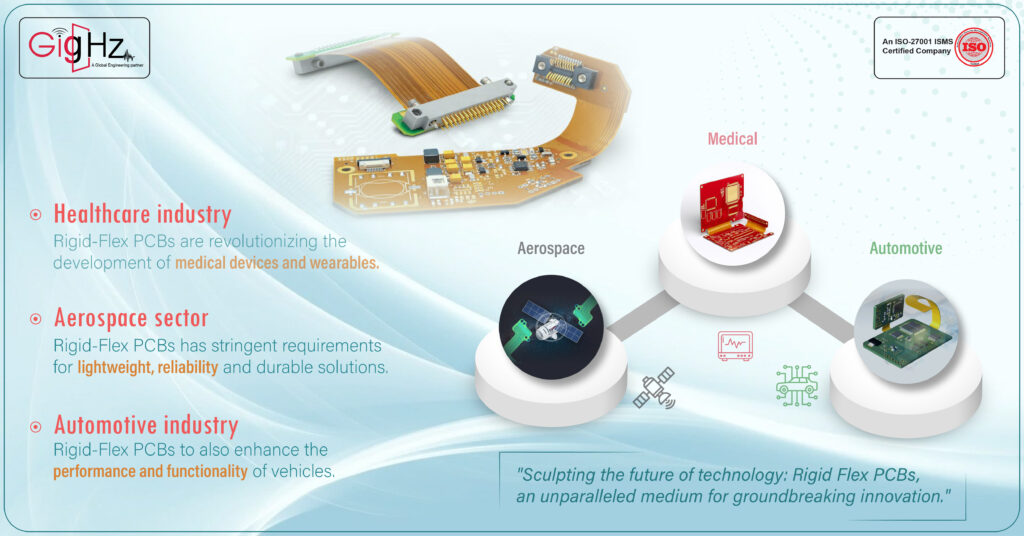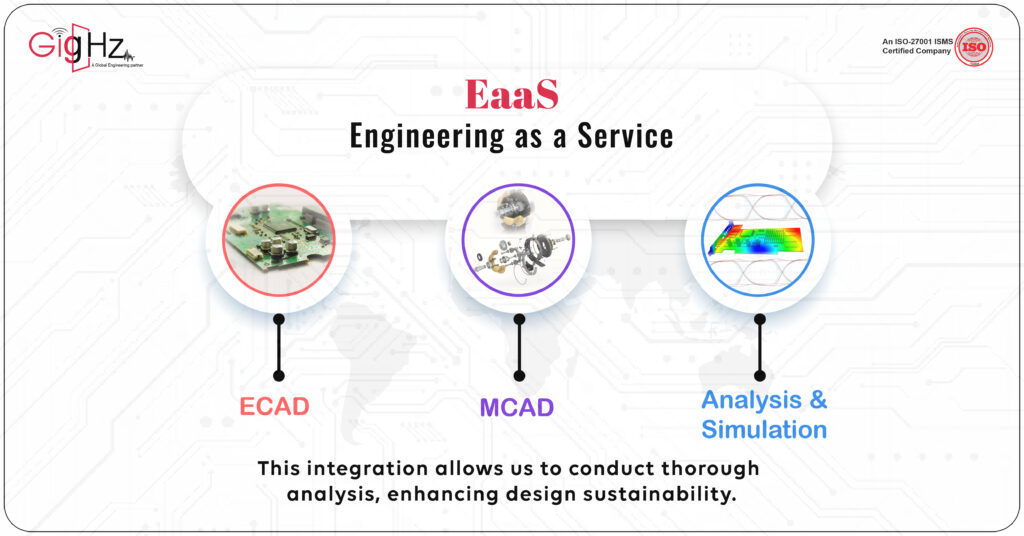Cost Analysis: Are Rigid-Flex PCBs Worth the Investment?
Welcome to the fascinating world of Rigid-Flex PCBs, where flexibility and innovation combine to revolutionize electronic designs.
In this blog post, we will embark on a journey to explore the incredible benefits and challenges of incorporating Rigid-Flex PCBs into electronic devices.

Here at GigHz, we’re in the business of turning “impossible” into “done.”
We thrive on tackling complex challenges and transforming them into innovative solutions.
Recently, we had the chance to flex our problem-solving muscles when a client came to us with a tricky situation involving a hosted payload sensor data collection in their spacecraft.

Category :
Published Date :
February 1, 2024
Category :
Published Date :
February 1, 2024
Category :
Published Date :
February 1, 2024
From their space-saving advantages to the complexities of manufacturing, we’ll dive deep into the realm of this leading-edge technology.
Imagine a world where electronic devices seamlessly adapt to our needs, fitting into the smallest spaces without compromising performance.
This is made possible by Rigid-Flex PCBs, which offer a unique solution to the limitations of traditional rigid circuit boards.
One of the key advantages of Rigid-Flex PCBs is their ability to save valuable space within electronic devices.
By eliminating the need for bulky connectors and cables, these flexible circuit boards enable engineers to optimize the use of available space.
As a result, electronic devices can become slimmer, more lightweight, and aesthetically pleasing without sacrificing functionality.
Moreover, Rigid-Flex PCBs offer enhanced reliability compared to their rigid counterparts. By eliminating the connections that are prone to failure, such as solder joints and connectors, these flexible boards reduce the risk of mechanical stress and wire fatigue.
This leads to improved durability, ensuring that electronic devices can withstand demanding environments and continue to perform reliably over time.
However, with these benefits come unique challenges in the manufacturing process. The complexity of producing Rigid-Flex PCBs requires specialized knowledge and expertise.
Throughout this blog post, we will explore real-world examples and insights from industry experts to gain a comprehensive understanding of the advantages and challenges associated with Rigid-Flex PCBs.
So, join us as we venture into the dynamic world of flexible electronics and discover how Rigid-Flex PCBs are shaping the future of electronic design,
Advantages of Rigid-Flex PCBs: Flexible Solutions for Modern Designs

Are you curious about the advantages of Rigid-Flex PCBs?
These innovative circuit boards offer flexible solutions that are transforming modern electronic designs.
Let’s see some of the remarkable benefits they bring to the table.
Compact Size: One of the significant advantages of Rigid-Flex PCBs is their small size.
These boards can be designed to fit into tight spaces and conform to unique device shapes, allowing for more compact and streamlined electronic designs.
Improved Reliability: Rigid-Flex PCBs offer enhanced reliability compared to traditional rigid PCBs.
By eliminating the need for external connectors and cables, these boards minimize the risk of failure due to mechanical stress or wire fatigue. This results in improved durability, making electronic devices more robust and reliable.
Reduced Weight: The flexible nature of Rigid-Flex PCBs allows for lightweight designs.
By eliminating bulky connectors and cables, manufacturers can significantly reduce the weight of electronic devices without compromising functionality.
This is particularly beneficial for portable devices where weight is a crucial factor.
High-Speed Signal Performance: Rigid-Flex PCBs excel in high-speed signal applications. The flexible sections of these boards help reduce signal impedance and improve signal integrity, resulting in better performance for high-frequency circuits.
This makes Rigid-Flex PCBs ideal for applications requiring fast data transmission and high-speed communication.
Harsh Environment Compatibility: Rigid-Flex PCBs are designed to withstand harsh environments. Their flexibility allows them to better absorb vibrations and shocks, making them highly reliable in challenging conditions.
This feature is particularly advantageous in industries such as aerospace, automotive, and medical where devices may be subjected to extreme temperatures, moisture, or mechanical stress.
Design Flexibility
Rigid-Flex PCBs offer a level of design flexibility that is truly remarkable, opening up new horizons for product innovation.
Layer upon Layer of Ingenuity
Rigid-Flex PCBs allow for the integration of multiple layers and complex circuitry into a single board. This means that engineers can pack more functionality into a smaller space, leading to highly intricate and compact designs.
By eliminating the need for separate rigid boards and connectors, Rigid-Flex PCBs streamline the design process and optimize space utilization within electronic devices.
This versatility empowers engineers to create products that were once unimaginable, pushing the boundaries of what is possible in electronic design.
Weight Reduction without Compromise
In weight-sensitive applications, Rigid-Flex PCBs offer significant advantages. By reducing the need for connectors and additional components, these boards contribute to lighter and more portable devices.
The elimination of bulky connectors also improves the overall reliability of the design, as it reduces the points of failure.
This weight reduction does not come at the expense of functionality or durability, as Rigid-Flex PCBs undergo rigorous testing to ensure their performance and reliability in demanding environments.
The design and manufacturing of Rigid-Flex PCBs require careful consideration of various technical aspects.
Engineers must select the appropriate materials that provide the necessary flexibility while maintaining signal integrity and reliability.
Advanced manufacturing techniques, such as laser drilling and precise alignment processes, are employed to ensure the precise integration of flexible and rigid sections.
Additionally, optimizing the routing of high-speed signals and managing thermal dissipation are crucial for achieving optimal performance in Rigid-Flex PCB designs.
Future Flexible of Rigid PCBs

Rigid-Flex PCB technology is rapidly gaining traction in various industries as its capabilities continue to evolve.
Let’s explore some sectors where Rigid-Flex PCBs are making a significant impact, driving innovation and transforming the way we approach electronic design.
In the healthcare industry, Rigid-Flex PCBs are revolutionizing the development of medical devices and wearables. These boards provide a flexible and compact solution for implantable devices, allowing for seamless integration into the human body.
This opens up possibilities for advanced monitoring and treatment options, improving patient outcomes. Additionally, Rigid-Flex PCBs enable the creation of flexible sensors that can conform to the body, enhancing comfort and accuracy in medical diagnostics.
Aerospace sector has stringent requirements for weight reduction, reliability, and performance. Rigid-Flex PCBs have emerged as a key enabler in this industry by offering lightweight and durable solutions.
These boards find applications in avionics systems, satellite communication systems, and unmanned aerial vehicles. By incorporating Rigid-Flex PCBs into aerospace designs, engineers can optimize space utilization, reduce weight, and enhance system reliability in challenging environments.
The flexibility of these boards allows for the integration of complex circuitry into curved surfaces, maximizing functionality while minimizing weight and volume.
Automotive industry is also embracing Rigid-Flex PCBs to enhance the performance and functionality of vehicles. These boards are used in various automotive applications, including advanced driver-assistance systems, infotainment displays, and engine control units.
Rigid-Flex PCBs enable the creation of compact and reliable electronic systems within the limited space available in vehicles. By reducing the number of connectors and cables, Rigid-Flex PCBs improve signal integrity and system reliability, leading to enhanced safety and performance on the road.
Engineering as a Service(EaaS)

You know, as the need for advanced and integrated engineering solutions keeps soaring, our Engineering as a Service (EaaS) are really stepping up the game.
We’re harnessing the power of ECAD, MCAD, and Analysis & Simulation.
This gives us a great position to be frontrunners in this industry.
What’s really cool is that we offer a full package, covering every single step of the engineering process.
And honestly, it’s this kind of approach that’s going to shape the future of our engineering.
It’s exciting stuff!
Why we do?
We challenge our Engineering capabilities with emerging technologies to keep your time and cost in control, thereby transforming product design with human touch quality.
Conclusion
In conclusion, rigid-flex PCBs offer an attractive solution for a variety of electronic projects due to their combination of form and function.
They are complex and require a lot of effort from design all the way through to fabrication, however, for those willing to take the extra steps necessary, they provide much more flexibility over traditional rigid boards.
If you’re looking to stay ahead of the curve with your electronics project, consider shifting towards rigid-flex PCBs – you won’t regret it!
For additional tips and ideas on how best to utilize these advanced circuit boards in your own projects, follow our blog and tune in for next week’s article on best practices when designing a rigid-flex board.
Discover our Specialities. Visit our Service Page. https://gighz.net/services/
And be sure to check out our newest updates: our Tight Space WireWrap PCB that takes rigid-flex solutions into miniature form factors – perfect for any advanced electronic design application!
Schedule a Call. Book a free consultation Now. https://calendly.com/gighz/30min


